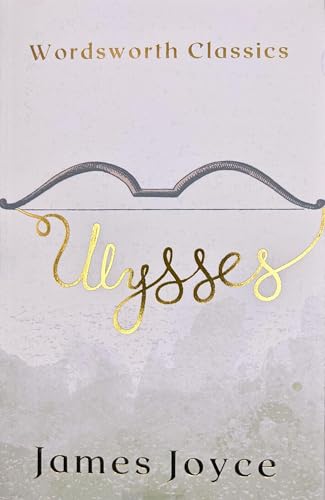Ah, Ulysses by James Joyce, a book that has given me equal parts joy and a few headaches! This review takes you on a comical yet honest journey through its stream of consciousness style, unforgettable characters, and a rich backdrop of Dublin in 1904. Buckle up for a unique literary roller coaster—hilarious, insightful, and maybe just a little perplexing. Let’s see if it deserves a spot on your shelf or if it’s better as a paperweight.
In a Nutshell
James Joyce’s ‘Ulysses’ often gets labeled as a modernist masterpiece, but don’t let that scare you off. It’s like an action-adventure story, but instead of explosions, you get a day in the life of Leopold Bloom in Dublin. Joyce penned this beauty back in 1922, and it’s packed with rich, stream-of-consciousness narration—think of it as a rollercoaster ride through the mind!
The novel explores themes like identity, love, and the mundane reality of everyday life. It’s got characters you can relate to, like Bloom and Stephen Dedalus, struggling with universal questions. If you’ve ever pondered what it means to be human, ‘Ulysses’ might just be your next read. Just make sure you’ve got your thinking cap on. Some sections read like they’re testing your brain’s flexibility! Nevertheless, it’s a rewarding challenge and a testament to Joyce’s genius.
Stream of Consciousness: A Wild Ride Through the Mind
Ah, stream of consciousness, the art of diving headfirst into the jumbled mess we call our thoughts. It’s like giving your brain a microphone and saying, ‘Go for it, buddy!’ Without a doubt, James Joyce’s ‘Ulysses’ is the quintessential example of this technique, turning a normal day into an extraordinary mental marathon. Joyce doesn’t just write a story; he lets us eavesdrop on Leopold Bloom’s mind, showing us his thoughts as they ebb and flow like the river Liffey.
The brilliance of Joyce’s writing lies in the chaotic beauty of his narrative style. It’s like when I tried to make spaghetti while telling a joke — everything was happening at once, and you’d think it was a mess, but somehow it all came together deliciously! ‘Ulysses’ transports the reader into the characters’ inner worlds, revealing the mundane musings and deep reflections that bounce around their heads. It’s like listening to a radio with all the stations playing simultaneously, and against all expectations, you can still make sense of it.
But, let’s be honest: this style can be quite a hurdle for readers. I, myself, had to put the book down to catch my breath because my brain felt like it just ran a marathon. Readers might find it challenging to follow the non-linear ebb and flow of thoughts and events, making it a real page-turner for those who enjoy a challenge. However, others might feel like they’re stuck in an unsolvable puzzle. In the next section, let’s dive into how Joyce crafts character development and relationships with the same finesse.
Character Development and Relationships in James Joyce’s Ulysses
James Joyce’s Ulysses is a rollercoaster of character development and relationship dynamics, all set in one single day in Dublin! It’s like a soap opera, but with fancy words and zero commercial breaks. Trust me, the characters in this book are so lifelike, I almost invited them over for dinner once.
Let’s take Leopold Bloom, for instance. He’s the lovable underdog, strolling around Dublin with his own private orchestra of internal monologues. You might say he’s an open book, pun intended. His interactions with other characters, especially with his wife Molly, are like a dance—sometimes clumsy, sometimes graceful, and often toe-tappingly complex. Their relationship feels real, with all its ups, downs, and sideway glances.
Then there’s Stephen Dedalus, who I sometimes think of as a younger, moodier Bloom. He’s got that artsy brooding thing down pat. His relationship with Bloom is like watching two people in a buddy comedy who just can’t admit they’re best friends yet. It’s touching, like the time my buddy Greg and I made eye contact while watching a rom-com—awkward, yet deeply profound.
The cast of characters interacting in Ulysses creates a tapestry of relationships that are as messy and tangled as the wires behind my TV. Joyce does an outstanding job of making each interaction count, leaving readers with the feeling that they’ve just attended a family reunion where everyone has secrets.
In the next section, we’ll open the metaphorical treasure chest and uncover the symbolism and motifs that make Ulysses shine like a pirate’s gold tooth.
Exploring Symbolism and Motifs in James Joyce’s Ulysses
If you ever wondered if a single day could be stretched into eternity, James Joyce’s Ulysses offers you just that with a basketful of symbolism and motifs. First off, let’s talk about the labyrinthine maps he scatters throughout the text. They’re not just street maps of Dublin; they’re mental mazes of the characters’ lives. This is fitting since we all get lost in our own thoughts sometimes, right? Just like the time I spent an hour searching for my glasses, only to find them on my head.
Oh, and then there’s water. It’s everywhere! Joyce uses it to symbolize the ebb and flow of life. Leopold Bloom, our protagonist, is practically a fish swimming through the city’s currents. It reminded me of my last attempt at a swimming race where I swallowed half the pool and still came in last. But wait, there’s more! A particular motif you can’t ignore is the motif of paralysis. From the indecisive Stephen Dedalus to Dublin’s stifled society, they’re all stuck in their own way, kind of like a squirrel trying to cross a busy road.
The motifs don’t stop there. The book is littered with references to Shakespeare, Homer, and more. It’s like the ultimate literary Easter egg hunt for those brave enough to seek. Ulysses is a treasure trove of symbols and motifs that can bewilder and amaze in equal measure. While wearing my metaphorical detective hat, I found that these elements create a multilayered tapestry that’s as Irish as a bowl of stew.
Next up, we take a jaunt through the cultural and historical context of Ulysses, like a cultural tourist with a very interesting map.
The Cultural and Historical Context of James Joyce’s Ulysses
James Joyce’s Ulysses hit the literary world in 1922 like an unexpected plot twist. It’s a wild ride through the cultural and historical setting of early 20th-century Ireland. And just like my attempt to make authentic Irish stew, it’s a mix of ingredients that gives it rich flavor.
Dublin in 1904. That’s where this epic journey unfolds. It’s a real place full of vivid characters and actual streets that Joyce knew like the back of his hand—or like I know my way to the coffee shop! He captures the city’s essence, giving readers a peek into the bustling life of a time when Ireland was under British rule, and the struggle for independence was in the air more than your old granny’s garlic breath.
The book’s characters, especially Leopold Bloom and Stephen Dedalus, grapple with issues that reflect their era’s tensions. National identity, religion, and societal norms are just some of the biggies Joyce throws into the mix. It’s as if he wanted to wrap the essence of Dublin in his pages, preserving it like a time capsule. And just like my aunt’s ancient fruitcake, it’s heavy but fascinating!
While readers can get lost in the intricate narrative, they can also appreciate how these cultural and historical nuances add layers to the story. These elements not only provide depth but also make it a valuable reading experience, as long as you don’t mind a little bit of mental gymnastics.
In conclusion, I highly recommend Ulysses for those craving a literary meal seasoned with rich historical and cultural spices. Be prepared, though—it’s as complex as trying to untangle last year’s Christmas lights!
“`html
Conclusion
“Ulysses” is a rollercoaster ride through 1904 Dublin. Joyce’s knack for stream of consciousness takes center stage, dancing between brilliance and bewilderment. The characters, mainly Bloom and Dedalus, offer deep, insightful relationships. Symbolic themes and rich historical context layer the narrative, making it an intellectually rewarding read. Despite its reputation for complexity, it’s worth tackling for its lasting impact on literature. Just keep a dictionary handy and maybe a comfy chair!
“`


